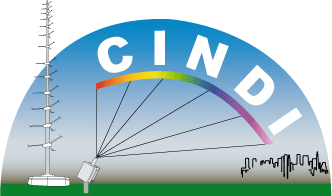In the period from June–July 2009, a large scale intercomparison of UV-Visible spectrometers took place at the Cabauw meteorological observatory, a semi-rural site located in the Netherlands, 30 km South of Utrecht. The main objective of this Cabauw Intercomparison Campaign of Nitrogen Dioxide measuring Instruments (CINDI) was to perform an extensive comparison of NO2measuring instruments that can be used in support of the validation of tropospheric NO2 column measurements from satellites, with a strong emphasis on the assessment of tropospheric NO2column and profile measurements using the MAXDOAS technique. The campaign included a formal semi-blind exercise following standards from the Network for the Detection of Atmospheric Composition Change (NDACC), and was followed by a number of additional activities. In total measurements from 32 NO2 instruments, most of them of DOAS-type but also data from a NO2 Lidar, in-situ sensors and a newly-developed NO2 sonde, were collected and intercompared.
A number of additional parameters were also measured, including aerosol and other trace gases like HCHO, CHOCHO, BrO and ozone. Moreover special measurements were performed to study horizontal gradients in atmospheric composition and their impact on remote-sensing observations. After the campaign various working groups were set up to analyse results with the aim to progress towards improved and standardized retrieval algorithms. The campaign should result in consolidated trace gas and aerosol data products from both remote-sensing and in-situ techniques, thereby contributing to fulfill the needs for improved vertically-resolved monitoring of the air quality.
More information on the CINDI website.
